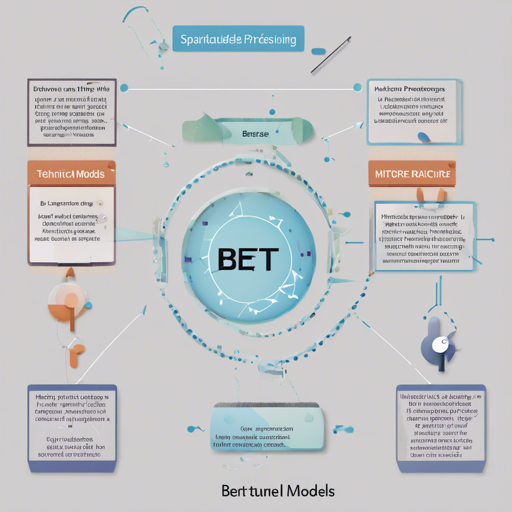The world of natural language processing is constantly evolving, especially with the advent of transformer-based models like BERT. In this article, we will explore how to fine-tune a set of unstructured sparse BERT-base-uncased models specifically for the SQuADv1 dataset, leveraging TensorFlow for seamless integration and deployment.
What You Will Need
- Python 3.x installed on your computer.
- TensorFlow library (version that supports TFAutoModel).
- Access to Hugging Face’s Transformers library (version 4.9.2 or later).
- Kernel with access to GPU is recommended for faster processing.
Step-by-Step Guide
1. Load a Pre-Trained Sparse BERT Model
Your first step is to load a pre-trained model. This involves utilizing the TFAutoModelForQuestionAnswering.from_pretrained(..., from_pt=True) method:
from transformers import TFAutoModelForQuestionAnswering
model = TFAutoModelForQuestionAnswering.from_pretrained("model_identifier", from_pt=True)2. Save Your Model
Once your model is loaded, you can save it to your specified directory using:
model.save_pretrained("tf_pth")Evaluation
To evaluate the model’s performance on the SQuADv1 task, use the following command:
!python run_qa.py \
--model_name_or_path model_identifier \
--dataset_name squad \
--do_eval \
--per_device_eval_batch_size 384 \
--max_seq_length 68 \
--doc_stride 26 \
--output_dir tmpeval-squadUnderstanding the Evaluation Results
After running the evaluation, you will receive a table filled with results displaying the various sparsity levels and their corresponding evaluation metrics for both PyTorch and TensorFlow models. Think of this as a race between two athletes; one represents PyTorch and the other TensorFlow. Regardless of their training and preparation, when it’s time to perform, discrepancies may exist in their speeds, which is evident in the evaluation metrics:
- EM (Exact Match): This percentage indicates how often the model’s predicted answer matches the ground truth exactly.
- F1 Score: This metric measures the balance between precision and recall, revealing how well the model predicts relevant answers without too many false positives.
Troubleshooting Common Issues
If you face issues such as loss in model translation or discrepancies between PyTorch and TensorFlow evaluations, here are a few suggestions:
- Check Model Compatibility: Ensure that the model you are loading is compatible between PyTorch and TensorFlow.
- Examine Hyperparameters: Sometimes, tweaking batch sizes or learning rates affects model performance.
- Normalizing Sparsity Levels: Make sure that the sparsity levels are normalized and consistent across both the attention heads and feed-forward neural networks.
- Update Libraries: Ensure that you are using the latest versions of TensorFlow and the Transformers library. If you are not, consider upgrading.
For more insights, updates, or to collaborate on AI development projects, stay connected with fxis.ai.
Conclusion
By following these steps, you should be able to fine-tune sparse BERT models for SQuADv1 effectively. Remember that discrepancies in model evaluations are not uncommon and should be systematically diagnosed. At fxis.ai, we believe that such advancements are crucial for the future of AI, as they enable more comprehensive and effective solutions. Our team is continually exploring new methodologies to push the envelope in artificial intelligence, ensuring that our clients benefit from the latest technological innovations.

